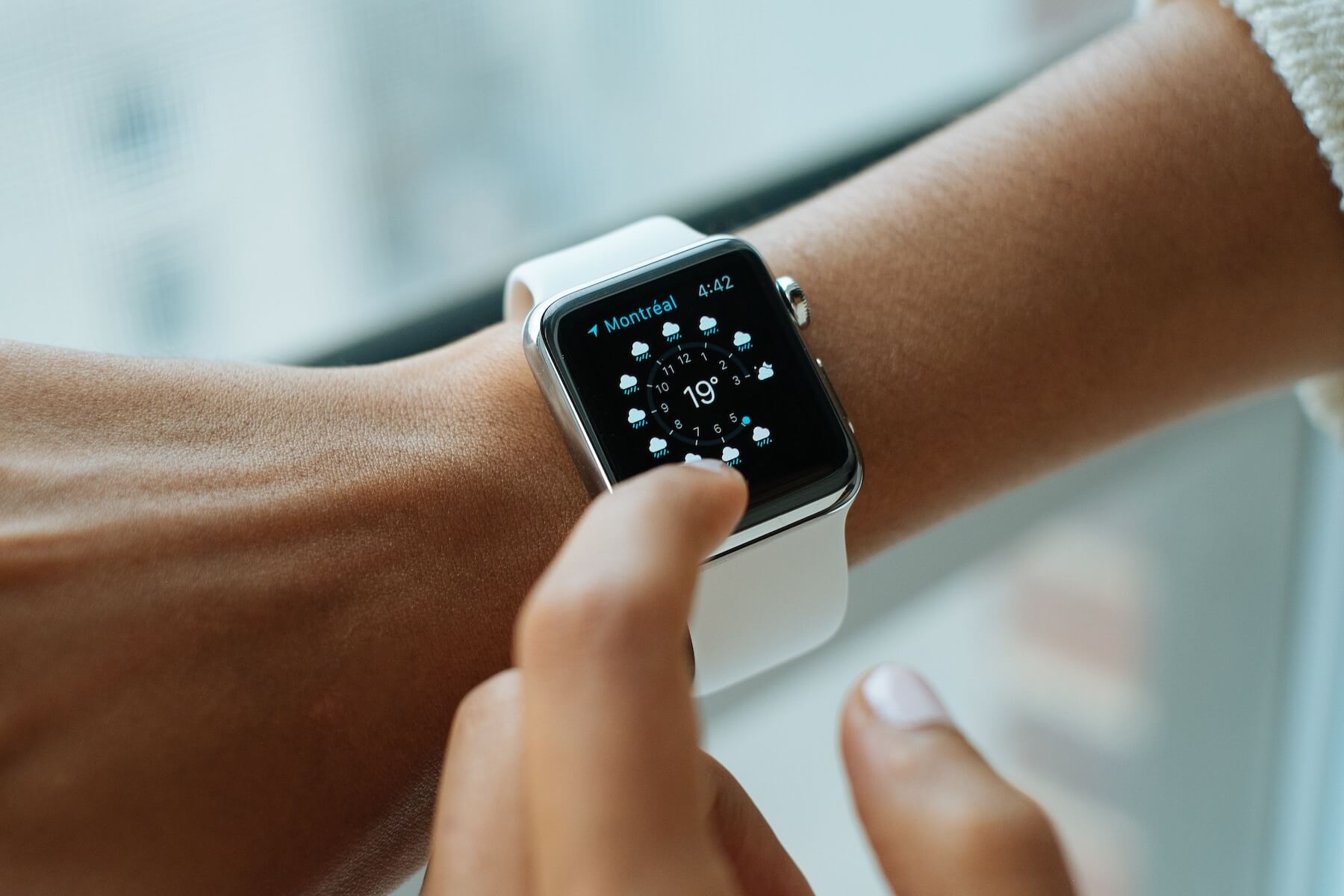The Apple Watch ECG app is a medical device that uses electrodes built into the back of the watch and digital crown to measure electrical signals across your heart. It can sense abnormal cardiac pulsations, such as AFib, and generate an electrocardiogram (ECG) result.
Since its launch in 2018, the Apple Watch ECG app has become one of the most widely used health-tracking tools.
How Does The ECG App Work?
The new ECG app for Apple Watch measures electrical signals from your heart using two electrodes on either side of the watch’s digital crown. Once the app is opened, you’ll be asked to place your finger on both sides of the digital crown for 30 seconds as it measures your heart rate.
Once the measurement is complete, results will immediately appear and alert you of any inconsistencies or abnormalities in your cardiac activity.
What The App Isn’t Designed To Do
The app can provide useful information about your heart rate and rhythm, but it cannot detect certain conditions, replace a full 12-lead ECG, or the medical advice from a doctor.
The ECG App can’t detect blood clots in the arteries or veins of the body. Blood clots can bring about grave issues, such as stroke or pulmonary embolism. It’s essential to get medical help when one encounters any signs of a coagulation disorder.
The Apple ECG App also can’t detect worsening heart failure. Heart failure is when the heart’s muscle becomes weakened, diminishing its capacity to circulate blood sufficiently throughout the body. If you experience any symptoms of worsening heart failure, such as breathlessness, fatigue, leg and foot swelling, chest ache, or fluttering, it’s imperative to consult a physician for further examination and treatment possibilities.
Finally, many other conditions that cannot be detected through an ECG alone could affect your cardiovascular health, including high cholesterol levels and hypertension (high blood pressure). These should continuously be monitored by regular visits with your physician, who will assess them based on their clinical judgment.
How To Take An ECG Reading On The Watch
The ECG app uses a single lead to measure electrical activity in the heart, can detect any irregularities or changes in rhythm, and facilitates tracking of one’s heart rate with ease over a period. Taking an ECG reading with this app is simple, fast, and accurate.
Step 1: Ensure Your Fit Is Snug
Before beginning the process, ensure the watch has a snug fit around your wrist. Afterward, open the Apple Watch app, tap the My Watch tab, head to General, and select Watch orientation. This will make sure that you get accurate readings from your ECG test.
Step 2: Rest Your Arm On A Flat Surface
Rest your arm with the watch on a table or flat surface to minimize movement during testing. This will ensure the best results when taking the ECG.
Step 3: Place Your Finger On The Digital Crown Of The Device
With one hand holding down firmly but gently on the Digital crown (you don’t have to press it), wait for approximately 30 seconds while seeing a representation of your heart rate displayed on screen during this period.
Step 4: Receive Results And Add Symptoms If Needed
At the end of the test, you’ll receive results and add any symptoms you experienced during the test, so they’re documented in Health App records for future reference by medical professionals who may need them at some point.
Types Of ECG Results You Could Get
Understanding ECG test results on the Apple Watch can be a daunting task. However, with the right information and understanding of each result, you can easily interpret your ECG readings.
Sinus Rhythm
A sinus rhythm is a healthy individual’s normal heart rate and rhythm. It’s characterized by regular electrical impulses in the sinoatrial node, located in the heart’s right atrium. The impulses travel through both atria and then to the ventricles, causing them to contract and pump blood throughout your body.
Sinus rhythms are usually between 60-100 BPM (beats per minute). This type of rhythm is considered healthy and normal for most people. If you receive this result from an ECG test, your heart is functioning normally, and no abnormalities are detected in its activity.
Atrial Fibrillation
Atrial fibrillation (AFib) signifies an irregular heartbeat pattern which can indicate underlying health issues such as high blood pressure or coronary artery disease. The ECG app version 1 can check for AFib between 50-120 BPM, while version 2 checks for AFib between 50-150 BPM.
Symptoms of AFib may include heart palpitations, breathlessness, chest discomfort, exhaustion, or lightheadedness. Treatment options for AFib include medications such as beta-blockers or calcium channel blockers, ablation therapy, implantable devices like pacemakers, lifestyle changes such as exercise and diet modifications, and surgery.
If you get this result, it’s suggested that you contact your doctor immediately — especially if you’re not diagnosed with AFib already.
Low Or High Heart Rate
Low or high heart rates may occur due to various reasons such as stress, exercise, or medications. However, they could also signify underlying health conditions like arrhythmia.
If either of these results appears on an ECG reading, it’s important to consult a medical professional about further testing and treatment options available to address any potential problems before they become more severe.
Inconclusive Result
An inconclusive result denotes that the machine reached no definitive conclusion during the testing due to various factors like a loose-fitting watch strap or a pacemaker ICD device inside the body. In such cases, doctors usually recommend repeating tests after making sure all possible causes have been eliminated to obtain accurate readings without any interference from external sources.
How Accurate Are The Test Results?
The accuracy of results from the Apple Watch ECG app has been tested against traditional 12-lead electrocardiograms (ECGs). In one study, researchers compared readings taken with both methods and found no significant difference between them when identifying AFib episodes. Despite its accuracy in detecting AFib, the Apple Watch ECG app was less precise at recognizing other arrhythmic events.
In addition to accurately detecting AFib episodes, the Apple Watch ECG app can also provide useful information about overall heart health by tracking your resting heart rate and alerting you if there are any sudden changes in rhythm or rate. Healthcare providers can use the collected information to swiftly and efficiently identify potential underlying issues, such as hypertension or coronary artery disease.
That being said, the accuracy of results from using this device depends largely on how well you’re able to keep still during measurement, as even small movements can affect readings significantly. Also, if there’s too much sweat or other moisture where measurements are taken, this could lead to inaccurate results.
The Apple Watch ECG Isn’t For Everyone
The Apple Watch ECG app is an exciting new development in medical technology, but it’s important to remember that this app isn’t for everyone. The US Food and Drug Administration (FDA) has only cleared the device for use by adults who meet certain requirements.
Age Restriction
The FDA has made it clear that the Apple Watch ECG app is intended only for people ages 22 and up. This age restriction was put in place because younger individuals may be unable to interpret their results accurately or understand how they should respond if they receive an irregular rhythm notification from the watch.
Diagnosed Patients
For those who have already been diagnosed with AFib, using this device could potentially lead to false positives or inaccurate readings, resulting in unnecessary doctor visits or, even worse, misdiagnosing a health issue. Anyone diagnosed with atrial fibrillation should speak with their physician before considering using this device as part of their treatment plan.
Individuals With Implanted ICDs or Pacemakers
Individuals with pacemakers or implantable cardioverter defibrillators (ICDs) are advised against using the Apple Watch ECG App. These devices can interfere with its accuracy when taking readings from your wrist area where they are typically located.
For those who still want to self-monitor their heart rate, consult a medical professional before using the Apple Watch ECG App.
The Benefits And Disadvantages Of Using The ECG App
Using the Apple Watch ECG app has several advantages that make it a great tool to assist healthcare professionals. The portability of having an ECG monitor right on your wrist is a remarkable asset, enabling you to rapidly and effortlessly acquire readings without lugging around heavy machinery or waiting for lab results. Furthermore, when used appropriately and with no motion during testing, the Apple Watch ECG app can produce results of commendable accuracy.
Another major benefit of using this technology is cost savings compared to traditional 12-lead ECGs, which require more expensive equipment and labor costs associated with interpretation by trained personnel. This renders it especially appealing for those who could be hindered from obtaining specialized attention due to financial barriers or physical remoteness.
However, employing this technology has its drawbacks that must be considered before deciding on its use in clinical practice. One potential issue is false positives or negatives due to user error or movement during testing, which could lead to incorrect diagnoses and treatment plans being unnecessarily implemented.
Battery life might also be impacted by continuous use since it requires a constant power supply, reducing its lifespan significantly when used every day for extended periods.
Learn To Read ECGs On ECGEDU.com
If you’re ready to learn how to accurately read an ECG, sign up for one of ECGEDU’s ECG interpretation courses. Our self-paced course will give you all the information needed to interpret electrocardiograms quickly and easily. With our program, medical professionals of all levels can gain knowledge to help them excel in their field while earning more money through increased experience.






